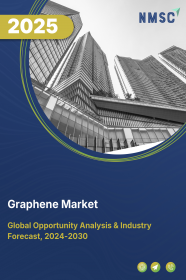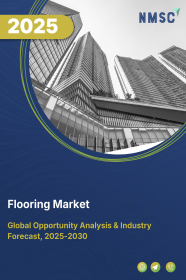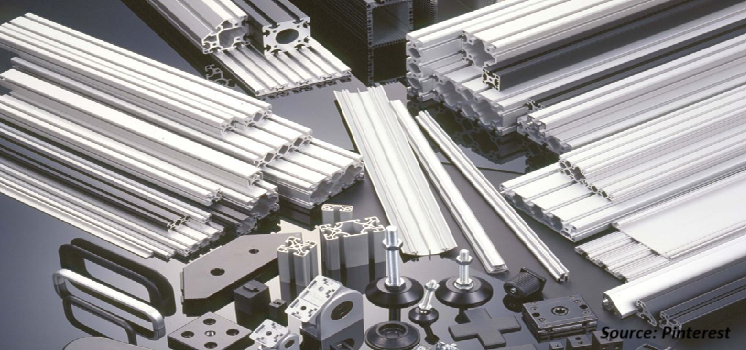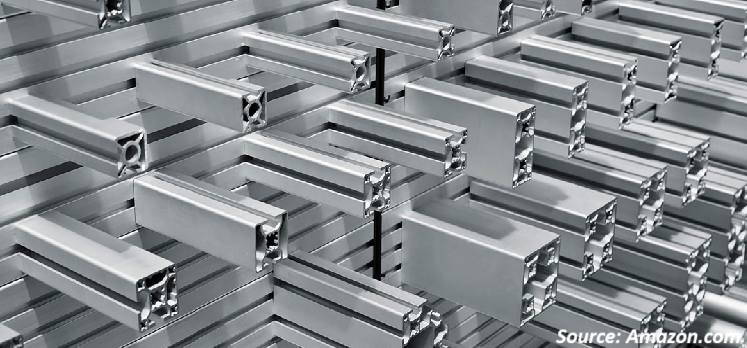
Automotive Interior Materials Market by Type (Plastic, Metal, Fabric, leather, Composites and Others), by Vehicle (Passenger and LCV)- Global Opportunity Analysis and Industry Forecast, 2020 – 2030
Industry: Materials and Chemical | Publish Date: 15-Oct-2020 | No of Pages: 827 | No. of Tables: 496 | No. of Figures: 466 | Format: PDF | Report Code : N/A
US Tariff Impact on Automotive Interior Materials Market
Trump Tariffs Are Reshaping Global Business
Market Definition:
The global Automotive Interior Materials Market size was valued to USD 102.19 billion with a volumetric sale of 23,270 kilotons in 2019, and is predicted to reach USD 189.78 billion with a booming sale of 35,058 kilotons by 2030, with a respective CAGR of 5.7% and 3.7% from 2020-2030.
Automotive interior materials are specifically designed automotive supplies, crafted to suit the in-vehicle interiors, hence providing immense comfort level, enhanced safety features, and an appealing appearance to the automobiles. The materials used to design the interiors are majorly plastic, metal, fabric, leather, composites, and others. These materials are crafted to be light-weight and durable in-order to increase the efficiency, decrease the fuel consumption as well as influence the buyer’s perception with its aesthetics.
Market Dynamics and Trends:
The automotive interior components market is observing lucrative opportunities owing to existing market trends regarding totally-flexible interiors, growing demand for premium vehicles with luxurious automotive interior, fully automatic positioning of components, selective air-bags, crash controls to enhance the safety of drivers as well as wide-range of customizable options open for the customers.
Besides, factors such as evolving concept of low-emission light weight automotive interiors, stringent regulations regarding fuel-economy, increasing disposable incomes at global level, increasing customer preferences for leather-lining in vehicle interiors as well as inclination of manufacturers towards eco-friendly components in-order to reduce their carbon footprints, are anticipated in fostering growth of the automotive interior materials market throughout the forecast period.
However, growth in trade war, increase in automotive import tariffs, lack of efficient recycling processes and fluctuating prices of raw materials can create demand supply gap which affects the production and inhibit the growth of automotive interior materials market.
Moreover, innovative automotive designs, advanced technological developments adopted by market players, low-cost higher sustainability products with increased efficiency and enhanced quality are paving the way for new opportunities in the global automotive interior materials market in future.
Market Segmentations and Scope of the Study:
The global automotive interior materials market share analysis is based on type, vehicle, and geography. Based on type, the market is segmented into metal, fabric, leather, plastics, composites, and others. The plastics are sub segmented into PP, ABS, PC, and Others. The metals are further divided into Steel, Aluminum, and Others. The leather is further sub segmented into Genuine and Synthetic. The composites are further classified into GFRP and CFRP. Based on vehicle, the market is divided into passenger and LCV. Geographic breakdown and analysis of each of the previously mentioned segments include regions comprising North America, Europe, Asia-Pacific, and RoW.
Geographical Analysis:
North America is expected to dominate the global automotive interior materials market, accounting for the highest market shares. This is attributable to factors such as rapidly increasing GDP and high employment rate in this region. Moreover, increasing demand for electric vehicles is expected to drive the growth of the market throughout the forecast period.
Asia Pacific is expected to show rapid growth with constant development in the market share due to growing demand for premium segment vehicles with luxurious automotive interiors. Furthermore, rapidly increasing per-capita disposable income coupled with increased demand of durable and lightweight materials are also expected to support the growth of automotive interior materials market.
Competitive Landscape:
The highly competitive automotive interior materials industry, consists of various market players. Some of the major market players include Benecke-Kaliko AG, BASF SE, Borgers SE & Co. KGaA, DK-Schweizer Co., Ltd., Dow Chemical Company, E.I. du Pont de Nemours & Co., Eagle Ottawa LLC, Johnson Controls, Inc., Faurecia Automotive GmBh., Katzkin Leather, Inc., Sage Automotive Interiors, Inc. and Lear Corporation among others. The past endeavors, present developments and futuristic advancements, sum-up to comprehend the overall growth of the global market.
For instance, in October 2019, Hyundai Motor Company’s (HMC) plant in Ulsan started using BASF Elastoflex flexible polyurethane (PU) foam systems in the production of its car seats. Its highly resilient PU foam claims to be a low volatile organic compound (VOC) solution, primarily used in automotive applications such as seats and headrests. As compared to conventional foams, ‘Elastoflex’ provides better load-bearing properties, higher comfort, and improved elasticity.
Furthermore, in January 2020, one of the key players in the global automotive interior materials market, Faurecia Automotive GmBh., completed its acquisition over SAS Automotive systems, now renamed as “SAS Interior Modules;” hence expanding its systems integration expertise to cover all interiors modules. This acquisition reinforces Faurecia’s future strategy in cockpits and its systems integration offers interior modules as well as functionalities such as lighting and thermal management.
Key Benefits:
-
The automotive interior materials market report provides the quantitative analysis of the current market and estimations through 2020-2030 that assists in identifying the prevailing market opportunities to capitalize on.
-
The study comprises a deep dive analysis of the market trend including the current and future trends for depicting the prevalent investment pockets in the market.
-
The information report provides detailed information related to key drivers, restraints and opportunities and their impact on the market.
-
The competitive analysis of the market players along with their market share in the global market.
-
The SWOT analysis and Porters Five Forces model of the global market is elaborated in the study.
-
Value chain analysis in the automotive interior materials market study provides a clear picture of the stakeholders’ roles.
Automotive Interior Materials Market Key Segments:
By Type
-
Plastics
-
PP
-
ABS
-
PC
-
Others
-
-
Metals
-
Steel
-
Aluminum
-
Others
-
-
Fabrics
-
Leather
-
Genuine
-
Synthetic
-
-
Composites
-
GFRP
-
CFRP
-
-
Others
By Vehicle
-
Passenger
-
LCV
By Geography
-
North America
-
U.S.
-
Canada
-
Mexico
-
-
Europe
-
UK
-
Germany
-
France
-
Italy
-
Spain
-
Rest of Europe
-
-
Asia-Pacific
-
China
-
India
-
Japan
-
Rest of Asia-Pacific
-
-
RoW
-
Argentina
-
South Africa
-
Brazil
-
Remaining Countries
-
Report Scope and Segmentation:
|
Parameters |
Details |
|
Analysis Period |
2019–2030 |
|
Base Year Considered |
2020 |
|
Forecast Period |
2020–2030 |
|
Market Size Estimation |
Billion (USD) |
|
Market Segmentation |
By Type (Plastics, Metals, Fabric, Leather, Composites) By Vehicle (Passenger, LCV, HCV) |
|
Geographical Segmentation |
North America (U.S., Canada, Mexico) Europe (UK, Germany, Italy, France, Spain, Rest of Europe), Asia-Pacific (China, Japan, India, Rest of APAC), Rest of the World (Brazil, Argentina, South Africa, Remaining Countries) |
|
Companies Profiled |
Benecke-Kaliko AG, BASF SE, Borgers SE & Co. KGaA, DK-Schweizer Co., Ltd., Dow Chemical Company, E.I. du Pont de Nemours & Co., Eagle Ottawa LLC, Johnson Controls, Inc., Faurecia Automotive GmBh., Katzkin Leather, Inc., Sage Automotive Interiors, Inc. and Lear Corporation. |
KEY PLAYERS:
-
Benecke-Kaliko AG
-
BASF SE
-
Borgers SE & Co. KGaA
-
DK-Schweizer Co., Ltd.
-
Dow Chemical Company
-
E.I. du Pont de Nemours & Co.
-
Eagle Ottawa LLC
-
Johnson Controls, Inc.
-
Faurecia Automotive GmBh.
-
Katzkin Leather, Inc.
-
Sage Automotive Interiors, Inc.
-
Lear Corporation

















 Speak to Our Analyst
Speak to Our Analyst





















